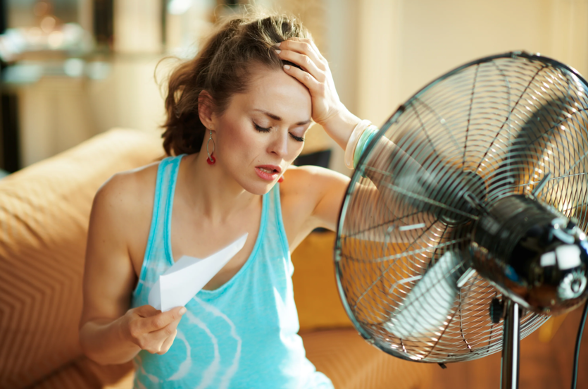When we think of Seasonal Affective Disorder (SAD), we often imagine the winter blues – gloomy skies, cold weather, and a longing for the warmth and light of summer. However, did you know that some people experience SAD during the summer? That's right, summer SAD is real and can be as challenging as its winter counterpart.
Seasonal Affective Disorder (SAD) is a type of depression that follows a seasonal pattern, typically occurring in the winter months when daylight hours are shorter. However, a lesser-known form of SAD happens during the summer. While winter SAD is characterized by feelings of sadness, lethargy, and a craving for carbs, summer SAD manifests differently.

According to the Cleveland Clinic, symptoms of summer SAD include:
● Insomnia: Difficulty sleeping or staying asleep.
● Loss of appetite: Decreased interest in food, leading to weight loss.
● Anxiety: Heightened levels of anxiety or agitation.
● Irritability: Increased irritability or mood swings.
● Restlessness: Feeling restless or unable to relax.
● Social withdrawal: Avoiding social situations or activities (Cleveland Clinic, 2022). These symptoms can be pretty debilitating and affect one's daily life, relationships, and overall well-being.

The exact causes of summer SAD are not fully understood, but several factors may contribute to its onset. Research suggests that individuals with summer SAD may have a heightened sensitivity to heat and light. The extended daylight hours and high temperatures can disrupt sleep patterns and lead to sleep deprivation, which is a known trigger for depression and anxiety (Cleveland Clinic, 2022).
Additionally, increased pollen counts and other allergens during the summer can cause physical discomfort, leading to irritability and mood swings. The pressure to participate in social activities and the perception that everyone else is enjoying the summer can also exacerbate feelings of isolation and depression (Jóhannsdóttir, 2023).

Coping Strategies for Summer SAD
If you suspect you have summer SAD, there are several strategies you can use to manage your symptoms and improve your mental health:
1. Create a Cool, Dark Sleep Environment: Use blackout curtains to block out early morning light and keep your bedroom cool to promote better sleep.
2. Stay Hydrated: Drink plenty of water to stay hydrated and help your body cope with the heat.
3. Limit Sun Exposure: Avoid excessive sun exposure during peak hours and use sunscreen to protect your skin.
4. Maintain a Routine: Stick to a regular sleep schedule and daily routine to provide structure and stability.
5. Exercise Regularly: Physical activity boosts mood and reduces anxiety. Try exercising in the early morning or late evening when temperatures are cooler.
6. Seek Professional Help: If your symptoms are severe or persist, consider speaking with a mental health professional. Cognitive-behavioural therapy (CBT) and other treatments can be effective in managing SAD (Jóhannsdóttir, 2023).
Summer SAD is a real and challenging condition that affects many people. By understanding the symptoms and implementing coping strategies, you can manage your mental health and enjoy the summer months. If you or someone you know is struggling with summer SAD, don't hesitate to seek help and support. Remember, mental health is important all year round.


